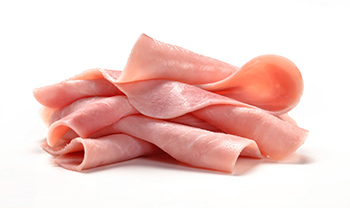Foodservice operators can use scales in a variety of applications.
Although not always a staple in commercial kitchens, foodservice operators can use scales in a variety of foodservice applications.
 This equipment can support production and plating tasks, such as batching, weighing ingredients and portion control, the latter of which often occurs in schools to meet federal nutritional regulations. At the checkout counter, operators use scales for point-of-sale weighing. Operators can use hanging scales and top-loading dial scales for weight estimating purposes in a variety of applications.
This equipment can support production and plating tasks, such as batching, weighing ingredients and portion control, the latter of which often occurs in schools to meet federal nutritional regulations. At the checkout counter, operators use scales for point-of-sale weighing. Operators can use hanging scales and top-loading dial scales for weight estimating purposes in a variety of applications.
Operators can choose from a variety of scales, including portion control, price computing, ingredient, baker’s dough, top-loading dial, hanging, retail point-of-sale, bench and receiving floor. Typical foodservice scale categories include digital, mechanical or baker’s dough types. With the lowest profile and footprint, digital scales measure in grams, ounces and pounds. This type provides fast, accurate readings and resists moisture, operating either on batteries or electricity. Mechanical scales have a traditional design with a platform or bowl on top that manually activates a pointer. Also measuring in ounces, grams and pounds, this type provides simple and quick operation. Baker’s dough scales have three platforms and use smaller weights for counterbalancing. Most often used in commercial bakeries, this type is designed primarily for weighing bulk ingredients.
Digital scales are less costly than newer PC-based scales and offer limited functionality. PC-based scales operate like a mini computer. These units can store recipes, product lookup codes (PLUs), pricing and other information while providing a display for advertising and informational signage.
Capacities vary, depending on the scale. Portion-control scale capacities can range from 4 to 20 pounds, while platform scales can range in capacity from 15 to 2,000 pounds. Top-loading and dough scales range from a capacity of 1 to 25 pounds. Platform sizes vary from 5.75 inches by 5.75 inches to 24 inches by 24 inches.
Scales are typically constructed from stainless steel, molded polymer and oven-baked enamel. Most platters for holding food are stainless steel. With the exception of manual scales, these units operate on batteries and/or electricity.
Point-of-sale scales must be NTEP legal to be trade certified. NTEP stands for National Type Evaluation Program, a non-profit corporation. NTEP-approved scales have been tested and evaluated to meet all government standards and requirements set by the National Institute of Standards and Technology. This covers several aspects of operation, including capacity, accuracy, effects from temperature and humidity, and the appearance of manufacturers’ labels. Each NTEP-approved scale will have a certificate or conformance number listed on it.
Depending on the type of scale and model, standard features include easy-to-read LCD readouts for digital scales or large dials for mechanical scales, roomy platforms or commodity pans, sturdy bases and on/off switches for electronic scales
Digital scales can store data, weigh items and print labels using saved information. For example, the price per pound of a ham can be stored, so when the ham is weighed, its cost is automatically calculated. Scales that provide label printing also offer other capabilities, including logos, nutritional labeling, reheating instructions, PLU and sell-by dates.
Service and bakery scales may offer some form of customization, such as flash keys to speed up the weighing process for popular items or specific signage for display screens.
Scale options depend on the type and model but may include mountable piezo tare push buttons, digital displays with checkweighing, submersible underwater units, rechargeable battery or AC adapters, NTEP legal-for-trade certifications, LCD readouts, ticket printers, foot tare switch pedals and rotating platforms.
Many options are software related. Scale-management software programs provide the capability to change a price on an item from a central location and automatically transmit this to different scales at various sites. They have internal scale networks and work like a server. These programs also can assist with maintenance and service issues.
New technologies include a solar-powered hanging scale that doesn’t use batteries, touchscreens with swiping capabilities and scales that can measure the weight of multiple items separately and simultaneously. At least one manufacturer offers a portion-control scale that provides more precise measurements.
Manufacturers are developing scales for build-a-meal applications geared for retail foodservice programs. This equipment will be designed to stop shrinkage, regulate purchases and increase consistency.



